You can also visit the websites of sober living homes in your area to find one that suits your needs. If you or your loved one needs to go to a sober living facility, contact your local healthcare professional or medical professional for a referral. Sober living homes are typically located in secure, serene neighborhoods to provide a stable housing environment. It’s a comfortable, home-like place where you can feel safe and relaxed. The support for our clients include receiving their credentials so they may seek employment opportunities, complete routine random drug testing so the house remains a safe place for all. What scares many people, especially those who are fresh out of prison, is the overwhelming amount of decisions to have to make each and every day.
Sober living homes generally have a zero-tolerance policy when it comes to substance use. The guidelines of the community help to keep you intact as you progress along your recovery journey. The overall environment encourages a deeper understanding of responsibility. To minimize isolation and maximize accountability, bedrooms are shared by two or three people.
Daily Life in New Jersey Sober Living Homes
It’s all about how we overcome the challenges by looking at the solutions instead of focusing on the problems. In recovery, I noticed it took a great deal of failure to get the message and learn a lesson to become a successful recovering addict. It’s an overwhelming gratitude that I’m still alive today- All Glory to God. Depending on your location, you may find there is not an appropriate home near or local to you.
Although there are similarities between SLH’s and other residential facilities for substance abusers, such as “halfway houses,” there are important differences as well. Unlike many halfway houses, SLH’s are financially sustained through resident fees and individuals can typically stay as long as they wish. Because they do not offer formal treatment services, they are not monitored by state licensing agencies. Examples of SLH coalitions in California include the California Association of Addiction Recovery Resources (CAARR) in the northern part of the state and the Sober Living Network in the south.
Recommended Rehab Treatment Articles
A federal certificate of confidentiality was obtained to further protect study confidentiality. Interviews were conducted at entry into the houses and at 6-month follow-up. We expected residents entering SLH’s who had established sobriety would maintain that sobriety, while those with recent substance use would show significant improvement. The need for sober housing increased during the 1970’s and continues today.
New Jersey sober living homes are residential facilities that provide a supportive, safe, and structured substance-free living arrangement for persons in recovery. Sober living homes help people transition from rehab programs to independent living. The recovery residences do not provide medical care and supervision but permit residents to receive addiction treatment from formal rehab programs.
Sober Living Houses
In New Jersey, the Department of Human Services (DHS) regulates and licenses sober living homes per state regulations on recovery residences. The call for evidence based practices (EBP’s) in addiction treatment is nearly universal. It is a noteworthy movement in the field because treatment innovations have not always been implemented in community programs. However, other types of community based services that may be essential to sustained recovery have received less attention.
- While the majority of students in the program have abused marijuana and alcohol, this year 20 percent of students coming into the program abused opiates.
- Living in a sober living home compared to the inpatient facility is typically cheaper because the staff provides fewer services.
- I look back at my time at New House 3 as some of the best times of my life.
- Ms. Khar has taken issue with the #MommyJuice memes that have proliferated on social media with harried women juggling the pressure of careers and family looking for salvation in goblets of chardonnay.
- The restrictive phase in a New Jersey sober living house focuses on the principles of living sober while adjusting to living with people.
- However, because there is no formal monitoring of SLH’s that are not affiliated with associations or coalitions it is impossible to provide an exact number of SLH’s in California or nationwide.
Residents are expected to stay clean and sober and have to submit to random drug tests as well as room inspections. They are also expected to hold a full time job, do chores, and participate in weekly meetings. New Jersey sober living homes are properly structured private residences providing their residents with privacy and comfort. Halfway houses offer dorm-like living arrangements, often congested and lacking privacy.
Housing
William provides marketing and managerial support to Clean And Sober Homes. His professionalism, determination, and natural charisma make him a key part of our team and family. Also on his recovery journey, William understands first-hand its joys, successes, and challenges and helps support and guide our residents. Individualized recovery plans are essential for staying sober, but having professionals that care enough to keep you in line is equally important. Some great examples of a firm support system can be seen in policies that enforce regular drug testing or encouraging residents to attend 12-Step meetings – both of which can make or break your early recovery. If you’re made to feel like an imposition or your questions go unanswered after a tour of the home, pay attention to your gut feelings.
- Prioritizing daily activities such as peer support group meetings, counseling, and therapy, helps residents succeed in maintaining their sobriety while living in a sober living home.
- They provide shelter, safety, and an opportunity to continue working on your recovery.
- There are rules, regulations, structures, and policies for halfway houses to ensure their residents maintain their sobriety.
- Although these guidelines are crucial components of sober living homes, residents will still have the freedom to come and go as they please.
- Despite the finding that 56% had left the houses by the 6 month time point, 40% of the sample reported complete abstinence from alcohol and drugs between baseline and 6-month follow up.
The paper ends with presentation of baseline data describing the residents who enter SLH’s and 6-month outcomes on 130 residents. Sober housing is a facility that offers substance-free living arrangements where persons recovering from addiction can live. Sober housing also provides a safe place for persons to transition from residential rehab treatment to living independently. Most sober living homes have structures and regulations such as therapies and mandatory curfews to prevent residents from a relapse. Sober living homes equip their residents through life skills training, accountability, therapy, and counseling sessions. They aim to ensure residents maintain their sobriety while transitioning to independent living.
Smart Recovery
Without someone there to tell you what to do or when to do it, many end up faltering or turning to drugs or alcohol. There are 10 phase II houses and 65 beds, 61 of which have private rooms. Rent is $395 for a shared room and $495 for a private room and includes furniture and utilities; residents are responsible for food. Sober living homes for the LGBTQ+ help them recover by focusing on self-acceptance, peer support, and mental health. People can experience specific challenges in recovery depending on their gender. By providing separate homes, facilitators can provide gender-specific care to improve the chances of success.
- Our purpose is to support individuals who suffer from substance abuse disorder by providing stable housing and to create a culture of recovery within our homes.
- However, these homes provide a supportive place to transition from an addictive lifestyle to one of sobriety and responsibility.
- People entering sober homes soon learn that living clean and sober entails a day-by-day approach wherein individual decisions made become the determining factors that support drug-free living.
- Sober living homes, also known as sober houses, are transitional living spaces for people who want to maintain sobriety.
- It’s comforting to know that your housemates are in the same boat as you.
- SLH’s are alcohol and drug free living environments for individuals attempting to maintain abstinence from alcohol and drugs (Wittman, 1993).
Sober home programs work to help residents develop a living clean and sober mindset, which takes shape as they take on the daily habits and routines that support this type of lifestyle. Since this process takes place within a semi-independent living environment, recovering addicts gain real world training that’s otherwise unavailable through a residential treatment program. Most residents in a halfway house enter the program through a court order, from a correctional facility, or as part of a plea bargain. In most cases, halfway houses provide substance-free accommodation services for former inmates. However, most residents in a sober living home enter the program voluntarily after completing a substance abuse treatment program.
Good neighbors: Oxford House approach inspires couple, raises questions
In some instances, a court may order an individual to live in a halfway house for a predetermined period. Most halfway housing encourages its occupant to continue with work or school while residing in the facility. There are rules, regulations, structures, and policies for halfway houses Why Some People Have A Higher Alcohol Tolerance Than Others to ensure their residents maintain their sobriety. For instance, some halfway houses may have curfews, while others mandate attendance of 12-step meetings and conduct random drug testing for residents. Some halfway houses may provide medical and mental health care services for residents.
All residents begin in Phase I, where they have the most restrictions and demanding chores. Residents in Phase I carry an AA/NA meeting card that is checked for compliance with the expectation that they attend five meetings per week. Residents must abide by a nightly curfew and sign in and out for accountability.
He and several roommates opened their own sober living house and the facility grew to the sixteen houses today. All of the houses are located in a suburb seventeen miles northeast of Sacramento, California. All houses are within a 9 mile radius of each other, which facilitates a sense of community and commitment. However, sober living homes are generally https://en.forexpamm.info/intermittent-explosive-disorder-symptoms-and/ less expensive than inpatient treatment centers. Founded by members in long-term recovery and family directly affected by addiction, we understand the challenges of clean and sober living after treatment. We have seen the success of a positive group environment, as well its short-comings, and these experiences have built our foundation.

